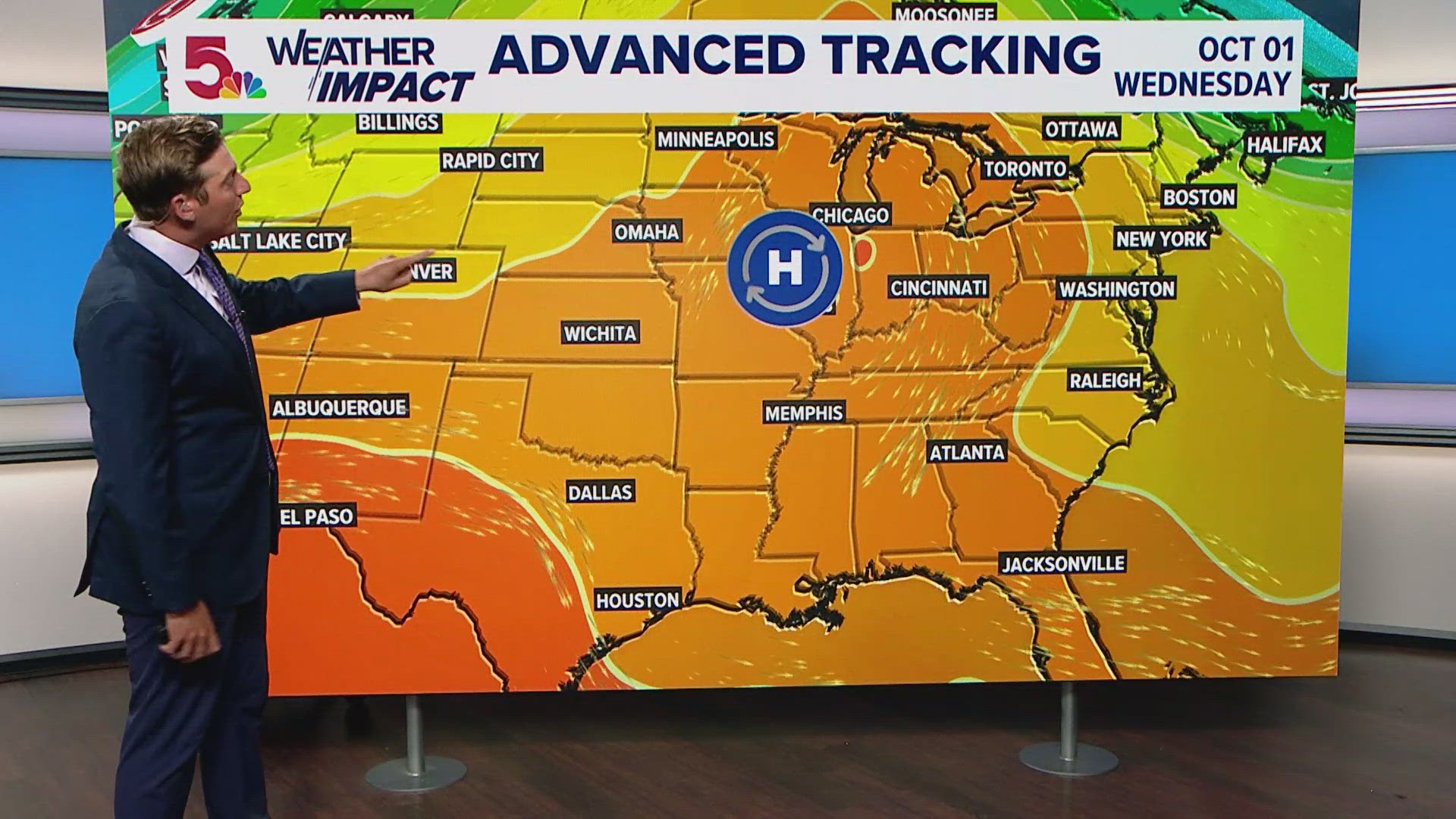Report on Weather Conditions in Maine and Implications for Sustainable Development Goals
Executive Summary
A persistent high-pressure system is establishing a dry and sunny weather pattern across Maine for the upcoming week. While favorable for outdoor activities, the lack of precipitation will exacerbate existing drought conditions and significantly elevate fire danger. This weather event directly impacts several United Nations Sustainable Development Goals (SDGs), including those related to water, terrestrial ecosystems, community safety, and climate action.
Detailed Meteorological Forecast
The forecast for the coming week indicates minimal to no rainfall, with a high-pressure system deflecting moisture away from the region. Key meteorological points include:
- Precipitation: The chance of rain is negligible for the majority of the state. A minor possibility of isolated showers exists for northern Maine and New Hampshire between Thursday and Friday, but this is not expected to provide significant relief.
- Temperatures: A gradual warming trend is expected.
- Overnight lows will range from the 40s to 50s.
- Afternoon highs will climb from the mid-70s early in the week to the low 80s by midweek.
- Fire Danger: Conditions will become critical towards the end of the week. By Friday and Saturday, a combination of low dew points, dry vegetation, and potential wind gusts up to 20mph will create a high fire danger.
Analysis of Sustainable Development Goal (SDG) Impacts
The current and forecasted weather conditions present significant challenges to achieving key Sustainable Development Goals in the region.
SDG 6: Clean Water and Sanitation
The prolonged lack of rainfall directly threatens water security. The worsening drought conditions place a severe strain on:
- Availability of fresh water for communities.
- Water resources for agriculture and local industries.
- The health of aquatic ecosystems dependent on stable water levels.
SDG 15: Life on Land
The heightened fire danger poses a direct threat to terrestrial ecosystems. This is a critical concern for protecting, restoring, and promoting the sustainable use of Maine’s forests and biodiversity.
- Dry vegetation creates fuel for potential wildfires, which can destroy vast areas of forest.
- Wildfires threaten wildlife habitats and can lead to significant biodiversity loss.
- Drought conditions stress native plant species and disrupt the ecological balance.
SDG 11: Sustainable Cities and Communities
The risk of wildfire extends beyond forests, threatening the safety and resilience of human settlements.
- Increased fire danger puts homes, infrastructure, and communities at risk, particularly in rural and wildland-urban interface areas.
- Effective community preparedness and emergency response plans are crucial to mitigate potential disasters and protect residents.
SDG 13: Climate Action
This extended period of dry, warm weather is consistent with patterns of increased climate variability and extreme weather events. It underscores the urgent need for climate action to:
- Strengthen resilience and adaptive capacity to climate-related hazards like droughts and wildfires.
- Integrate climate change measures into regional and local policies and planning.
- Promote education and awareness on climate change mitigation and adaptation.
Analysis of Sustainable Development Goals in the Article
1. Which SDGs are addressed or connected to the issues highlighted in the article?
-
SDG 6: Clean Water and Sanitation
The article’s central theme is the lack of rain and worsening drought conditions in Maine. Statements like “Low humidity, dry weather will worsen the drought” and “With little to no rainfall recently and none expected in the coming days” directly address issues of water availability and scarcity, which are core to SDG 6.
-
SDG 11: Sustainable Cities and Communities
The article highlights a direct threat to communities by mentioning the “high fire danger.” This risk, stemming from the dry conditions, impacts the safety and resilience of human settlements. The goal of making communities resilient to natural disasters is a key component of SDG 11.
-
SDG 13: Climate Action
The prolonged dry and sunny trend, leading to drought and fire risk, can be interpreted as a climate-related hazard. The article discusses the community’s vulnerability to these extreme weather conditions (“it is important to remain aware of fire weather risks”), which connects to SDG 13’s focus on strengthening resilience and adaptive capacity to climate-related disasters.
-
SDG 15: Life on Land
The article explicitly discusses the impact of the drought on terrestrial ecosystems. The phrase “dry vegetation could easily ignite” points to the degradation of land and forests. The worsening drought conditions directly relate to the challenges of desertification and the sustainable management of ecosystems, which are central to SDG 15.
2. What specific targets under those SDGs can be identified based on the article’s content?
-
Target 6.4: Increase water-use efficiency and address water scarcity
The article’s repeated emphasis on the “worsening our drought” and “very little chance for rain” directly relates to the challenge of water scarcity. While the article doesn’t discuss water-use efficiency, it highlights the core problem that this target aims to solve: a lack of sufficient freshwater resources.
-
Target 11.5: Reduce the number of people affected by disasters
The article warns about a “high fire danger” and the risk of dry vegetation igniting. This is a direct reference to a natural disaster risk that could affect communities in Maine. The warning itself is an action aimed at mitigating the potential impact of such a disaster, aligning with the goal of protecting people from disasters.
-
Target 13.1: Strengthen resilience to climate-related hazards
The drought and associated fire danger are described as ongoing issues (“Dry and sunny trend continues”). This points to the need for communities to adapt to these climate-related hazards. The article serves as a public awareness tool, which is a fundamental part of building resilience.
-
Target 15.3: Combat desertification and restore degraded land
The article’s focus on the “worsening our drought” and “dry conditions” directly relates to the processes of land degradation and desertification. The mention of “dry vegetation” is a symptom of land affected by drought, which this target aims to address.
3. Are there any indicators mentioned or implied in the article that can be used to measure progress towards the identified targets?
-
Indicator for Drought Conditions
The article implies the use of a drought severity metric. Phrases like “worsen the drought” and “dry conditions continuing” suggest that the level of drought is being monitored. A specific indicator would be the level of water stress or a drought index for the region.
-
Indicator for Rainfall Levels
The article directly mentions rainfall as a key factor. Statements such as “very little chance for rain” and “little to no rainfall recently” point to the amount of precipitation (or lack thereof) as a measurable indicator of the severity of the dry conditions.
-
Indicator for Fire Risk
The article explicitly refers to “fire danger” multiple times, stating there will be a “high fire danger.” This implies an official risk assessment system is in place. A relevant indicator would be the number of days with high fire danger warnings issued.
4. Table of SDGs, Targets, and Indicators
| SDGs | Targets | Indicators |
|---|---|---|
| SDG 6: Clean Water and Sanitation | Target 6.4: By 2030, substantially increase water-use efficiency across all sectors and ensure sustainable withdrawals and supply of freshwater to address water scarcity. | Implied: Level of water stress (from “worsening our drought”). Direct: Amount of precipitation (from “little to no rainfall recently”). |
| SDG 11: Sustainable Cities and Communities | Target 11.5: By 2030, significantly reduce the number of deaths and the number of people affected…caused by disasters. | Direct: Fire danger level (from “high fire danger”). |
| SDG 13: Climate Action | Target 13.1: Strengthen resilience and adaptive capacity to climate-related hazards and natural disasters in all countries. | Implied: Frequency and intensity of drought events (from “Dry and sunny trend continues”). |
| SDG 15: Life on Land | Target 15.3: By 2030, combat desertification, restore degraded land and soil, including land affected by…drought. | Direct: Condition of vegetation (from “dry vegetation could easily ignite”). |
Source: wmtw.com







